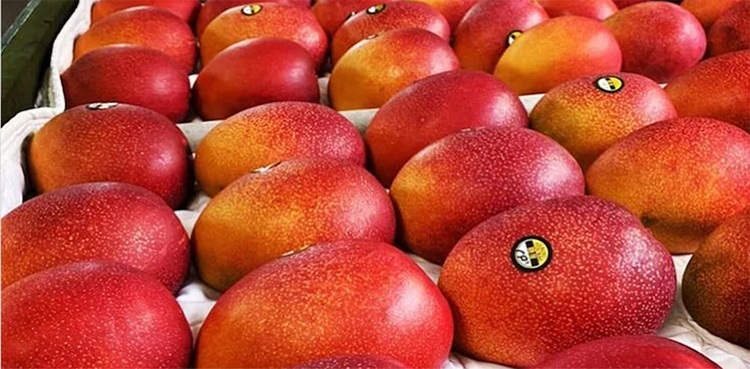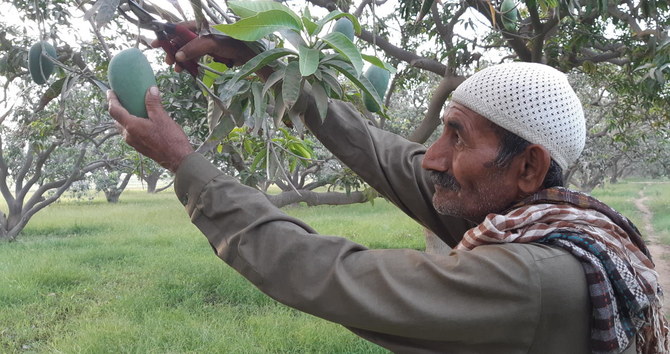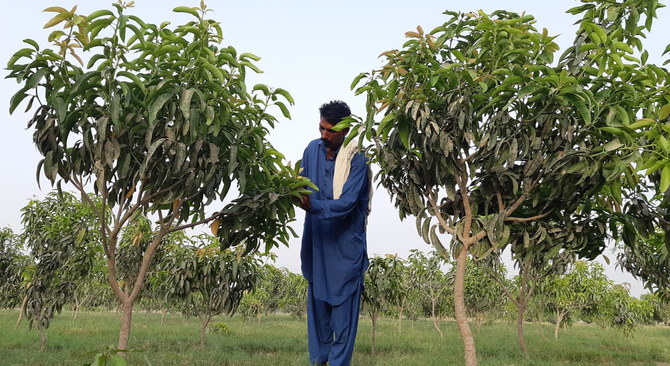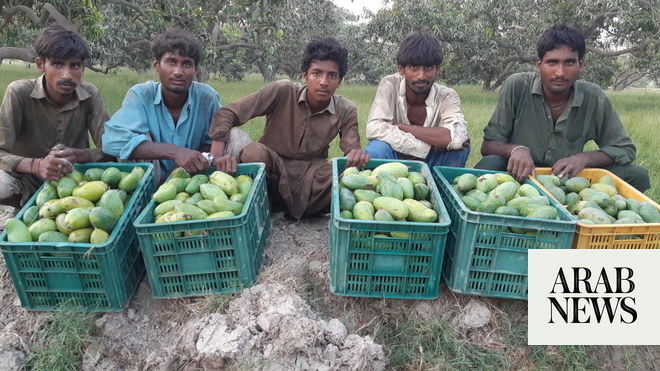I have been roaming around the villages of Bangladesh since the early 80s to cover news of prospects, fortune and miseries of farmers and the farming sector, which you have seen on Bangladesh Television’s Mati O Manush (Soil & People) programme.

www.thedailystar.net
12:00 AM, June 18, 2021 / LAST MODIFIED: 01:43 AM, June 18, 2021
World’s most expensive mango Miyazaki in Bangladesh
Omar Faruque Bhuyian at his Miyazaki mango orchard on his rooftop garden in Dhaka’s Zafrabad area. Photo: Hridoye Mati O Manush
Shykh Seraj
I have been roaming around the villages of Bangladesh since the early 80s to cover news of prospects, fortune and miseries of farmers and the farming sector, which you have seen on Bangladesh Television's Mati O Manush (Soil & People) programme. Moreover, I went to different countries of the world to show the brilliant advancements in the agriculture sector that the farmers have made.
Since the beginning of Hridoye Mati O Manush (Soil & People in Heart) on Channel I, I concentrated to look at the farmers and the farming sector with a more in-depth vision, with perspectives like climate change, modern farming technologies, crop diversity, and policymaking in my thinking process.
It has been possible to ensure the food security of the growing population of Bangladesh with the help of agricultural scientists, researchers, farmers, extension workers, above all with the government patronage and active role of mass media for at least a decade. In this case, the development of high yielding rice varieties has played a big role.
Along with the huge spread of fish farming, the tide of poultry rearing among the youth made a remarkable stride. Agricultural diversity has increased at an optimistic speed. Cultivation of various foreign vegetables and fruits has also increased. Various fruits have been cultivated all over the country for years: malta, lemon, orange, strawberry, avocado, apple plum, dragon fruit, fig etc. I have had the great opportunity to see the agriculture that has changed during the past 50 years, since Bangladesh's independence.
Dear readers, back in 2006, I went to Japan. While filming at an agricultural market called Ameiko village in Tokyo, a mango seller called me. When I approached him, I saw red mangoes, that was probably the first time I saw the great red mango, Miyazaki. A few years back, 75 varieties of mangoes were displayed at the National Fruit Exhibition in Dhaka. The name of the mango varieties had a royal symbol at the fair. Khirbhog, Mohanbhog, Rajbhog, Ranibhog, Ranipachanda, Sindura, Subarnarekha, Jagatmohini, Khirmon, Dudhsar, Begumbahar, Pujaribhog, Rajalakshmi, Dudhkumari, Badshah-pachhand, Begumpachhand, Rajapachhand, Bonkhasa, Kohitur - more than a hundred kingly and queenly names of mangoes, which dates back to the ancient times of King Akbar the Great.
Greater Rajshahi is the capital of mango in our country. I remember getting acquainted with many eminent scientists while preparing a news report on fruit cultivation in Bangladesh during the 80s. Dr Amjad was one of them. At that time, I asked him, why sweet mango only grows in Rajshahi? Why mango cultivation is not possible in the whole country? He pointed out the limitations of soil and climate in mango cultivation around the country. But researchers gradually overcame that limitation. We now know that mango is now grown across the nation. Amrapali saplings first came to our country in 1990. The size of the tree is small. But the yield is high. 1,500 Amrapali saplings can be planted in 1 hectare of land at a distance of five hands. Sixteen metric tons of Amrapali can be yielded from a hectare.
New varieties, new names are constantly being added to the mango kingdom. Researchers have added Bari-4, Bari-11 and other mango varieties. More than that, different varieties of mangoes brought from abroad have been added. In particular, the local nurseries have introduced different varieties of mangoes from Thailand, Vietnam, Singapore, China, Japan, Malaysia, etc. One such mango is Miyazaki from Japan. Miyazaki is grown in Japan's Miyazaki region in the south; thus it is called Miyazaki.
The Japanese name for this mango is 'Taiyo No Tamago', which means 'Egg of the Sun'. It's very sweet and the world's most expensive mango. Miyazaki Mango caught the attention on the internet in 2016 when a pair of mangoes' auction price was 500,000 Japanese Yen (USD 4547) in Fukuoka, Japan. Miyazaki is widely grown in greenhouses. I found this mango tree on one of the roofs of Dhaka but it couldn't give any fruit. I doubted whether this mango would grow in our country.
But overcoming all uncertainty, Omar Faruque Bhuiyan, an RMG entrepreneur from Dhaka's Zafrabad area, has miraculously grown the most expensive mango at his rooftop garden. A few days back, I went to his rooftop to see this. I would like to also mention that Miyazaki is being cultivated in different regions of the country and it's praiseworthy.
Omar Faruque is doing a fabulous job in producing Miyazaki. His family members, as well as friends, are cooperating with him in this endeavour. His roof was full of lush red Miyazaki mangoes. I was so amazed to see this. I felt like I entered a red orchard full of red mangoes. Omar Faruque is a very choosy man who picks on planting very carefully. Back in 2010, through one of his friends, he brought the Miyazaki scion and later on did the grafting to finally get the production on his rooftop.
I liked the spirit in him and certainly rooftop farming is going to such a place beyond our thoughts and these wonderful people have put themselves into farming with all their heart and passion. Omar Faruque plans for an extension of this variety if he's supported by the government in leasing lands at the hill tracts region. A young entrepreneur named Mong Setu Chowdhury and Hlashimong Chowdhury in Khagrachhari has also started cultivating Miyazaki. I have heard they have also grown quite a plenty this year. The prominent businessman of Chapainawabganj Akbar Hossain is also doing Miyazaki variety alongside other fifteen different mango varieties.
Dr Mehedi Masud, project director of "Year-Round Fruit Production for Nutrition Improvement" says Bangladesh's climate and the weather are perfect for Miyazaki production. Government horticulture centres are trying to produce saplings of this variety. Many private nurseries have moderately been successful in producing the saplings of Miyazaki. Moreover, if we want to grab the international market we need attractive and quality product along with Good Agricultural Practices (GAP) certificate.
If we can combine this, Miyazaki can be added to the export market of Bangladesh. Some of our entrepreneurs invest in different agricultural goods without giving a good thought and analysis; I tell them not to do this, rather they should study before and then go for it and many have followed the right path. Farmers should focus on profit on loss and they should gain the right knowledge on how to farm a particular agricultural product. If we can properly understand how to grow Miyazaki in our country and with the government assistance in capturing the international market, I see a great future of this mango to be exported around the world from Bangladesh.


 arynews.tv
arynews.tv
















